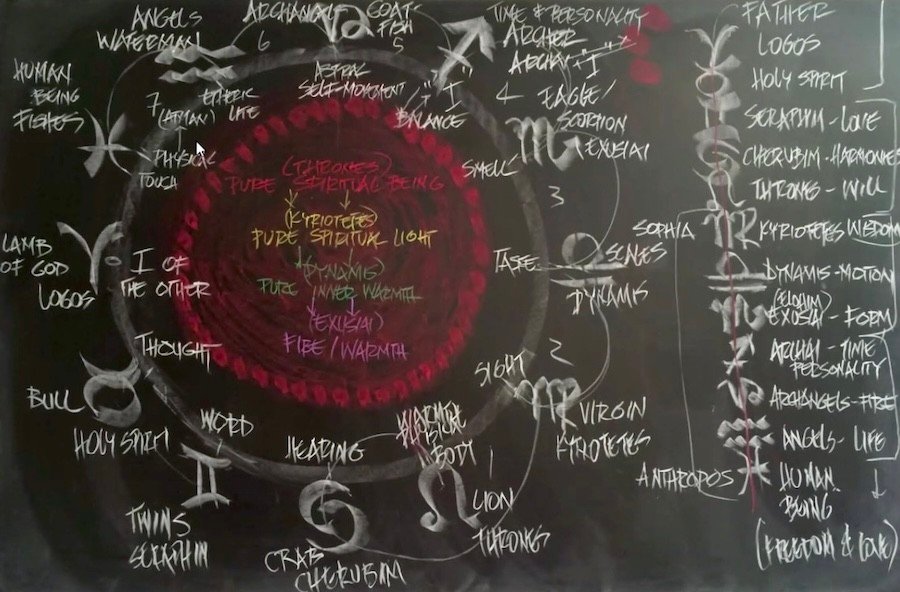“I want to kindle every human being
From out the spirit of the cosmos
That he become a flame,
And unfold in fire
Her being’s very nature.”
— Rudolf Steiner
“Beauty connects the I with the body.”
— Rudolf Steiner
What is the Section? What does “It” do? Well, that’s a big question! In fact, it is one of the topics we will be discussing at the North American Section Conference in 2024.
To familiarize yourself with the Section and the activities of its participants, you might want to read several of the very helpful essays by Goetheanum Section leader Christiane Haid. These can be found on the North American Section website. For example, Christiane’s essay with the title “The Dawn of the Beautiful.” Rudolf Steiner put “Beauty” front and center as the concern for our Section when he founded our Section in 1924—and in German we are called the Section for Beautiful Sciences.
Or you could read Christiane’s essay on the history and development of the Section since its founding. Or: “Literature as a Path to Being Human,” which is one of the research projects that our North American colleagues share with our colleagues in Dornach.
The North American Section Conference in San Francisco and Toronto will concern itself with poetic language and the literary imagination. The Section leadership group gave the conference the title “The Genius of Language” (from a series of lectures by Rudolf Steiner to the first Waldorf teachers) — but by this we don’t mean that this is a linguistics conference. The word “genius” should be understood as “spirit of place” — a term from the Latin “genius loci.”
What are the presiding spirits of our North American landscapes and how do they inform our varied literatures? Each conference location will speak to its local spirits: Toronto to Canadian literatures, San Francisco to the literatures of the United States, but more specifically to the bio-regional literatures of Northern California and Alta California. How does landscape inform and guide poetic vision? How does climate and geography—elementals and weather—the interplay of sunlight and ocean wave—grassland and redwood—animal and human being—nourish a poetic ecology? What are our stories and poems that are spoken from these spirits of place?
A Moveable Feast
I should add that the Literary Arts and Humanities Section in North America is quite diverse. Different individuals pursue all manner of projects, depending on their inclinations and energies. Our Section is not monolithic. There is not an Executive directing what goes on. Personally, I can only speak for what arises from the work of individuals who choose to share with me what they are doing. It has always been the case, going back to the founding of the Section, that projects and initiatives occurred locally. Right now in North America, we’re an ecology of bio-regional pioneers who freely collaborate. We roam about. Some of us are poets; some are scholars; some of us are musicians and artists; some of us self-identify otherwise in respect to the Section and its many tasks. Some of us just like literature and value a good discussion of literature from a spiritual scientific perspective — and also value the friends who share in that literary conversation.
A waiting list exists for San Francisco. Persons with a strongly felt destiny connection to the Section and its work who wish to attend in San Francisco should not hesitate to contact me directly at NASectionConference2024@gmail.com. I’ll see what I can do.
Toronto has room and will continue to register until the event. I encourage you to attend the Conference in Toronto, especially if you live on the eastern seaboard. The registration price for Toronto is now only $125 US, and we have added exciting events to the program.
You do not need to be a “member” of the Section to attend the conference. Blue cards are not required. This is a conference for friends and members of the Section—and that means: it is a gathering of those persons who feel a destiny connection to this Section of the School for Spiritual Science—a connection to its interests and how it works.
Lastly, if it helps, here is a verse by the “herald of Anthroposophy,” the poet Novalis. This fragment summarizes much better than I can do what I am trying to say about the Section and how it works. This fragment by Novalis is all you really need to read.
470. ARS LITTERARIA. The Literary Arts.
Everything that a scholar does, says, speaks, suffers, and hears, etc. must be an artistic, technical, and scientific product, or some such operation. He speaks in epigrams; she acts in a play; he is a dialogist; she lectures on treatises and sciences— he relates anecdotes, stories, fairytales, novels; she perceives poetically. If he draws, he draws sometimes as an artist, sometimes as a musician. Her life is a novel and that’s why she sees, hears, and reads everything precisely in this manner. In short, the true scholar is the completely developed human being who bestows on whatever they touch and do, a scientific, idealistic, and syncretistic form.
— Novalis, from Das Allgemenine Brouillon (trans. Bruce Donehower)
Click Here to Register for Toronto
7.31.24



